Porte de Sukjeongmun (서울성곽 북악산 숙정문)
2.4Km 2020-06-19
San 25-22, Seongbuk-dong, Seongbuk-gu, Seoul-si
+82-2-747-2152
Parmi les quatre grandes portes (Sukjeongmun, Namdaemun, Dongdaemun et Seodaemun) construites par l’Empereur en 1396, Sukjeongmun est ce qu’on appelle la porte du Nord.
Située au Nord de Séoul, cette porte forme les ailes de la porte du Nord, avec le palais Gyeongbokgung au centre, et Changaemun (Jahamun) au centre. De crainte que cette zone doit endommagée par les piétons, l’Empereur y fit planter des pins et interdire le passage en 1413. Par conséquent, Sukjeongmun devint un agréable sentier de promenade jusqu’à son infiltration par des soldats de la Corée du Nord communiste en 1968. Suite à cet incident, la zone devint interdite aux civils.
La réouverture de Sukjeongmun en avril 2006 entraîna celle du mont Bukak en avril 2007. Elle est divisée en trois circuits. Le mont Bukak se trouve dans un excellent état de conservation grâce à cette longue période de restriction, et si vous grimpez au sommet de la montagne, vous serez récompensé par une superbe vue panoramique de Séoul.
Gare culturelle de Séoul 284 (ancienne gare de Séoul) (문화역서울 284)
2.4Km 2023-04-26
426, Cheongpa-ro, Jung-gu, Seoul-si
+82-2-3407-3500
L’ancien bâtiment de la gare de Séoul a été conçu par Tsukamoto Yasushi, professeur à l’Université de Tokyo. La construction de la station a commencé en juin 1922 et a été complété en septembre 1925. Avant la construction du bâtiment, la gare de Séoul était seulement un bâtiment en bois à 2 étages (33 m²) appelé « l‘arrêt Namdaemun ». Il était situé entre la gare de Séoul actuelle et Yeomcheongyo et était un arrêt pour la ligne de train Gyeongin (Séoul-Incheon). Le nom de la station est devenu « station Gyeongseong » en octobre 1910 et quelques années plus tard, 3 lignes de trains supplémentaires ont été ouvertes (ligne Gyeongbu en 1904, ligne Gyeongui en 1905, et ligne Gyeongwon en 1914).
Le nouveau bâtiment à 2 étages (niveau inférieur 1 et 1 niveau supérieur) a été construit en bois et en brique avec une toiture en ardoise soutenue par une armature en fer. Le premier étage a été bâtit dans un style Renaissance et le second étage a été décoré avec des briques rouges et du granite.
Après que la Corée ait regagné son indépendance face à la colonisation japonaise, le gouvernement américain a pris le contrôle de la station Gyeongseong (1946) et en 1947, le nom est alors devenu « Gare de Séoul ».
Everest (에베레스트)
2.4Km 2019-09-02
2-1, Jong-ro 51ga-gil, Jongno-gu, Seoul
+82-2-766-8850
Nepal is located in the southcentral region of the Himalayan Mountains between India and Tibet, accounting for its diverse mixture of both country's cultures. Restaurant Everest allows guests to enter this culturally diverse world by offering cuisine from Nepal, India, and Tibet. In addition, Everest is operated by a Nepali owner, serving affordable food to tourists and students interested in the culture of Nepal. Customers can learn of the traditional food and culture of Nepal while listening to Nepali music and watching movies. The restaurant also provides a seminar area for various meetings.
Festival de la fin d'année au parc Cheongun du mont Inwangsan (인왕산 청운공원 해맞이축제)
2.4Km 2023-10-24
Seoul, Jongno-gu, Cheongun-dong 7-4
02-731-1701
Il s'agit d'un festival afin de permettre aux visiteurs de commencer la nouvelle année de manière festival tout en exprimant leurs voeux pour la nouvelle année. Les visiteurs pourront profiter de divers concerts traditionnels et autres activités.
La rue de jokbal à Jangchungdong (장충동 족발 골목)
2.5Km 2019-09-26
176, Jangchungdan-ro, Jung-gu, Seoul-si
+82-2-2236-9135
Le phénomène de la rue de jokbal à Jangchungdong a commencé il y a 50 ans avec l’ouverture de deux restaurants de jokbal coréens (pieds de porc cuits à la vapeur), suivis par un afflux de nouveaux restaurants de jokbal durant la fin des années 70 et début des années 80. Aujourd’hui les restaurants de jokbal continuent de servir un des délices coréens les plus appréciés sur la route principale et les allées des environs de la rue Jangchungdong 1(il)-ga.
Samcheonggak (삼청각)
2.5Km 2021-08-07
3, Daesagwan-ro, Seongbuk-gu, Seoul-si
+82-2-765-3700
Le pavillon Samcheong, fut établi en 1972, c’était un lieu pour les dîners et importantes négotiations gouvernementales dans les années 70-80. En 1990, le pavillon changea de nom et devint un restaurant jusqu’à ce que la direction en change en décembre 1999.
C’est en 2000, que le site et ses bâtiments furent désignés lieu de culture. Samcheonggak est dorénavant ouvert au grand public. En Octobre 2001, Samcheonggak s’ouvrit également comme centre de représentations traditionnelles. Actuellement les 6 maisons traditionnelles ou « hanok » qui composent le site de Samcheong-gak sont gérées par le centre culturel Sejong. Parmi les 6 bâtiments on compte une salle de spectacle, un restaurant, une maison de thé et un salle de reception pour les invités.
Le Pavillon Samcheong est l’un des endroits les plus connus de Séoul où l’on peut voir des spectacles traditionnels et dîner.
Fat Grandma's Place (뚱뚱이할머니집)
2.5Km 2016-09-05
174-1, Jangchungdan-ro, Jung-gu, Seoul-si
+82-2-2273-5320 / 2279-2714
An elderly lady with fine wrinkles is still in charge of creating the captivating taste of jokbal (steamed pork hock). Originally, the restaurant did not have a name, but customers referred to it as the “Fat Grandma’s Place.” Sure enough, as you enter the restaurant, you will notice a plump, elderly lady with silver hair sitting at the counter. The place is well known for jokbal with an exquisite combination of rich meat and soft fat. Three or four ingredients, including ginger, are added to the simmering broth to eliminate the strong meat smell. When you order a small serving, you are served radish “water” kimchi as well as two small bindaetteok free. You can order additional bindaetteok too, three for 5,000 won. When you order a large serving, you are served four free bindaetteok. Many customers order jaengbanguksu (spicy buckwheat noodles), which goes perfectly with jokbal.
KPOP HOTEL SEOUL STATAION BRANCH
2.5Km 2021-04-09
16-17, Huam-ro 60-gil, Jung-gu, Seoul
+82-10-8774-5231
K-Pop Hotel is only a 2-minute walk from Exit 10 of Seoul Station on Subway Lines 1 & 4. It’s conveniently located near a number of tourist destinations, since it’s a mere 10-minute walk from Sungnyemun Gate and only a 15-minute walk from Namsan Park. Gyeongbokgung Palace is only a 10-minute ride away, with Insa-dong located a mere 12 minutes away from the hotel. The 24-hour front desk provides express check-in and check-out services as well as a safe deposit box. Featuring Standard Double Rooms, Twin Rooms, and Family Rooms, the hotel is a great place to stay for business travelers and tourists traveling with friend or family. All the rooms are furnished with air conditioner, cable/satellite TV channels, flat screen TV, free Wi-Fi connection, and hair dryer. There is a rooftop terrace and a cafe where breakfast is served. The cafe is also furnished with kitchen, desktop computer, and washing machine, which can be shared among the guests. If you want to park your car more conveniently and quickly, notify the front desk of your arrival in advance.
Samcheonggak(삼청각)
2.5Km 2020-12-24
3 Daesagwan-ro Seongbuk-gu Seoul
+82-2-765-3700
You can enjoy Hanjeongsik (Korean table d’hote) in a beautiful natural environment. This Korean dishes restaurant is located in Seongbuk-gu, Seoul. The most famous menu is Korean table d'hote.
Wonjo 1ho Jangchungdong Halmeonijip(원조1호장충동할머니집)
2.5Km 2020-11-17
174, Jangchungdan-ro, Jung-gu, Seoul
+82-2-2279-9979, +82-2-2275-1064
Following his mother’s footsteps, the son of the previous owner is now managing the family business. Opened during the early years of Jokbal Street, the delicious meat at this restaurant is fondly remembered by customers. While the meat itself has almost no fat, the fat portion is extremely soft and savory. This restaurant is also different from the others in that it provides kongnamul-guk (bean sprout soup) with the jokbal (steamed pork hock). Pyeongyang-style naengmyeon (cold noodles) and tteok-mandu-guk (rice cake-dumpling soup) are also delicious. Pyeongyang naengmyeon is cooked to suit South Korean tastebuds. Besides, the noodles and dumplings are hand-made. Despite the restaurants long history, the building of the restaurant is clean and well-maintained as it was being rebuilt after a fire in the 1980s. There are plenty of tables on the first and second floors to accommodate customers, and the third floor is reserved for large groups. Especially noticeable is the clean appearance both inside and out, despite the restaurant’s long history; probably because the building was rebuilt after a fire in the 1980s. Plenty of tables on the first and second floors accommodate customers, and the third floor is reserved for large groups.
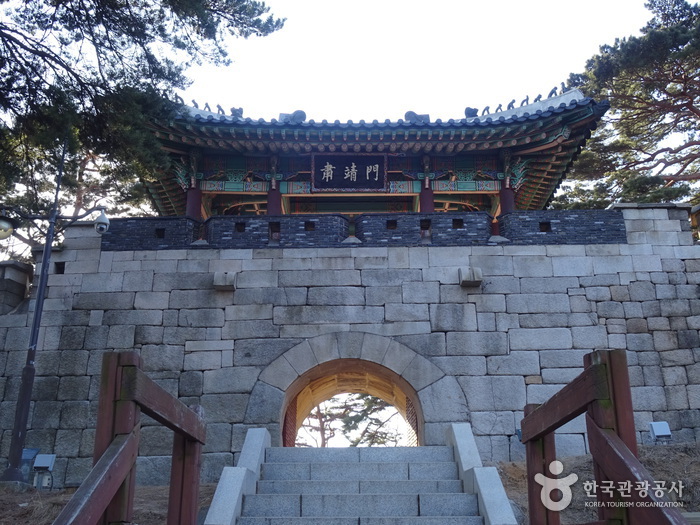
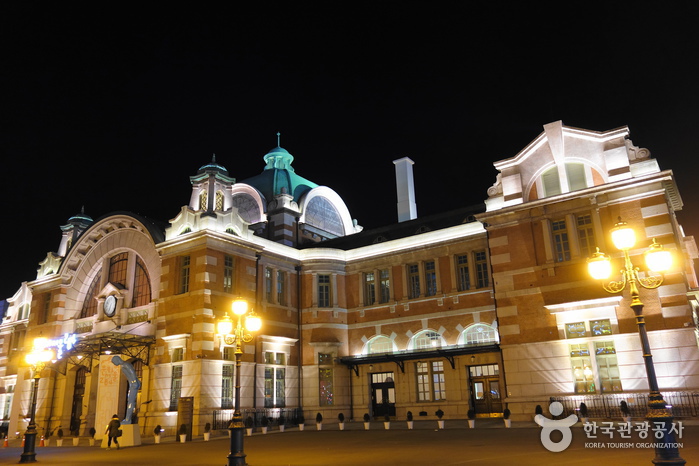
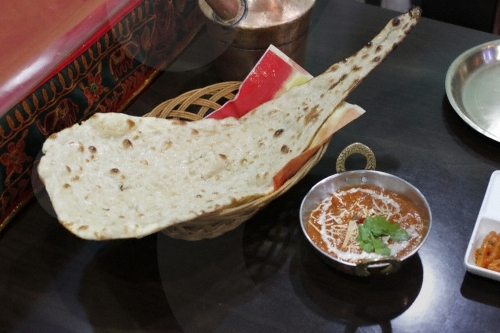
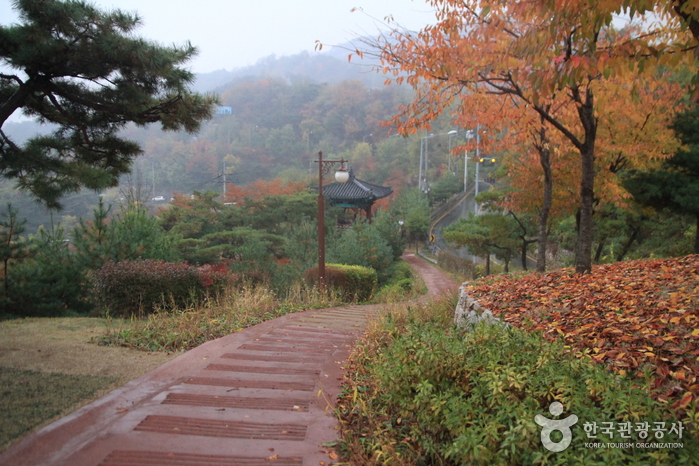
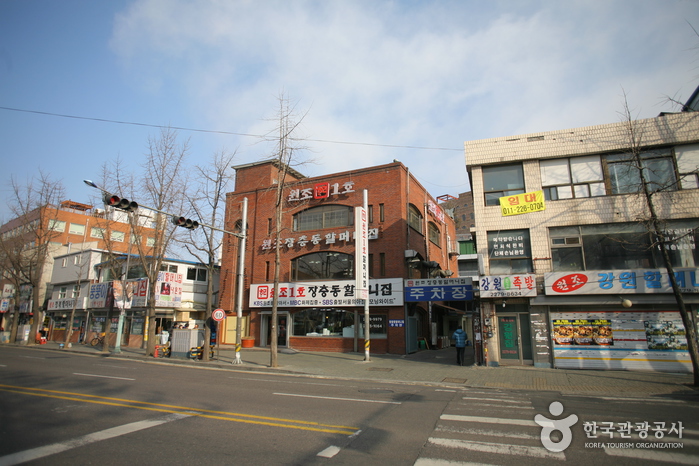
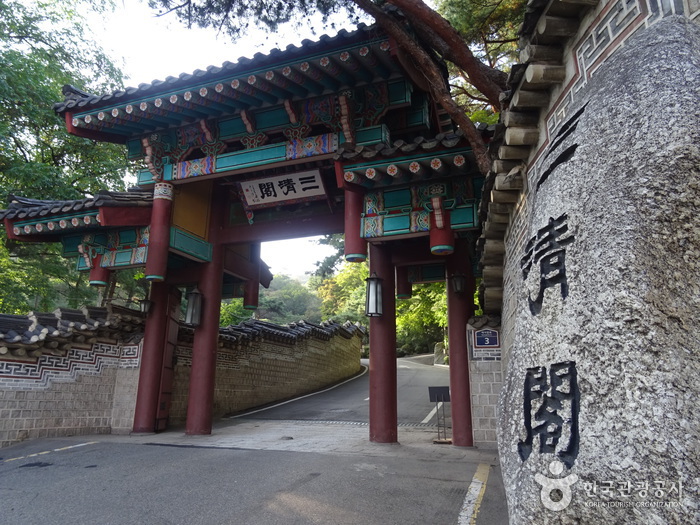
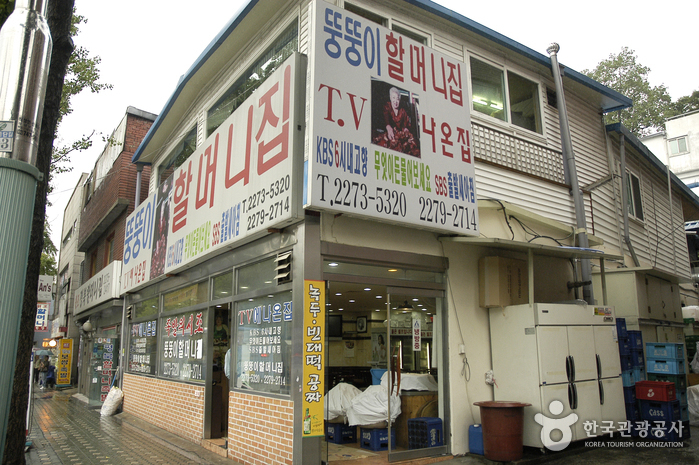
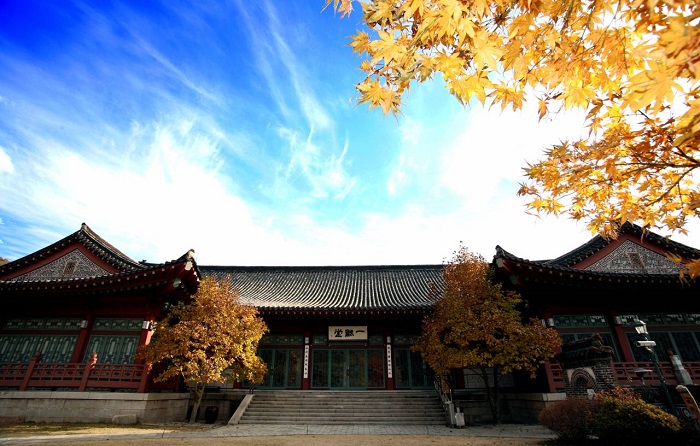
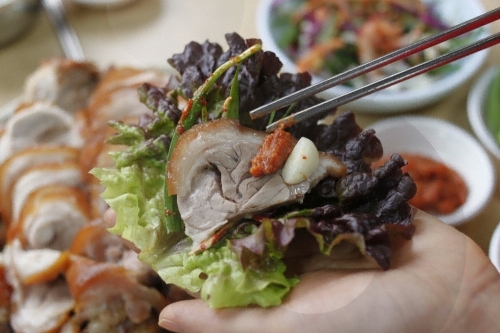
 Français
Français
 한국어
한국어 English
English 日本語
日本語 中文(简体)
中文(简体) Deutsch
Deutsch Español
Español Русский
Русский